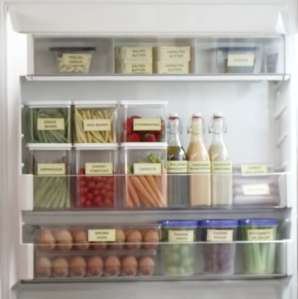After my first day of research, I realized that my RFID system would have to change, again. While RFID can have a range of up to three meters with passive tags, the only readers and tags I found that would work with Arduino had a range of about two inches. This shatters my plan of placing the container anywhere in the fridge without any consideration for the reader. Plus, the tag with the best range and best price is the blank ID card.
Time for some brainstorming. Rather than having the tags permanently attached to the Tupperware, I could have ID card slots on the containers so the tags can be moved around. While the tags would be movable, they would still correspond to only one food item and would be labeled as such. To organize the cards that are not in use, my sister and I came up with two methods. One would be to have a card box that could either attach to the fridge with a magnet or sit on a table next to the fridge. The other would be to have an organizer on the front of the fridge that would layout the cards so you could tell with a glance what you’re out of and where a tag is. If magnets didn’t affect the RFID, I’d have each tag have a magnet so it could stick to the fridge on its own. Ah well.
In terms of use, the user would have to wave the card/container in front of the sensor when that item is being checked in or out. The reader I’m purchasing beeps once it reads the tag, though, so the user can tell when the tag has been read. However, a card would only need to be scanned when the item is being checked out or checked in. It wouldn’t have to be scanned when it is just coming out for normal use. The reader would need to be carefully placed so that it’s easy to scan in/out a new item, while also allowing someone to take an item out without it being scanned. But that’s simply trial and error.

